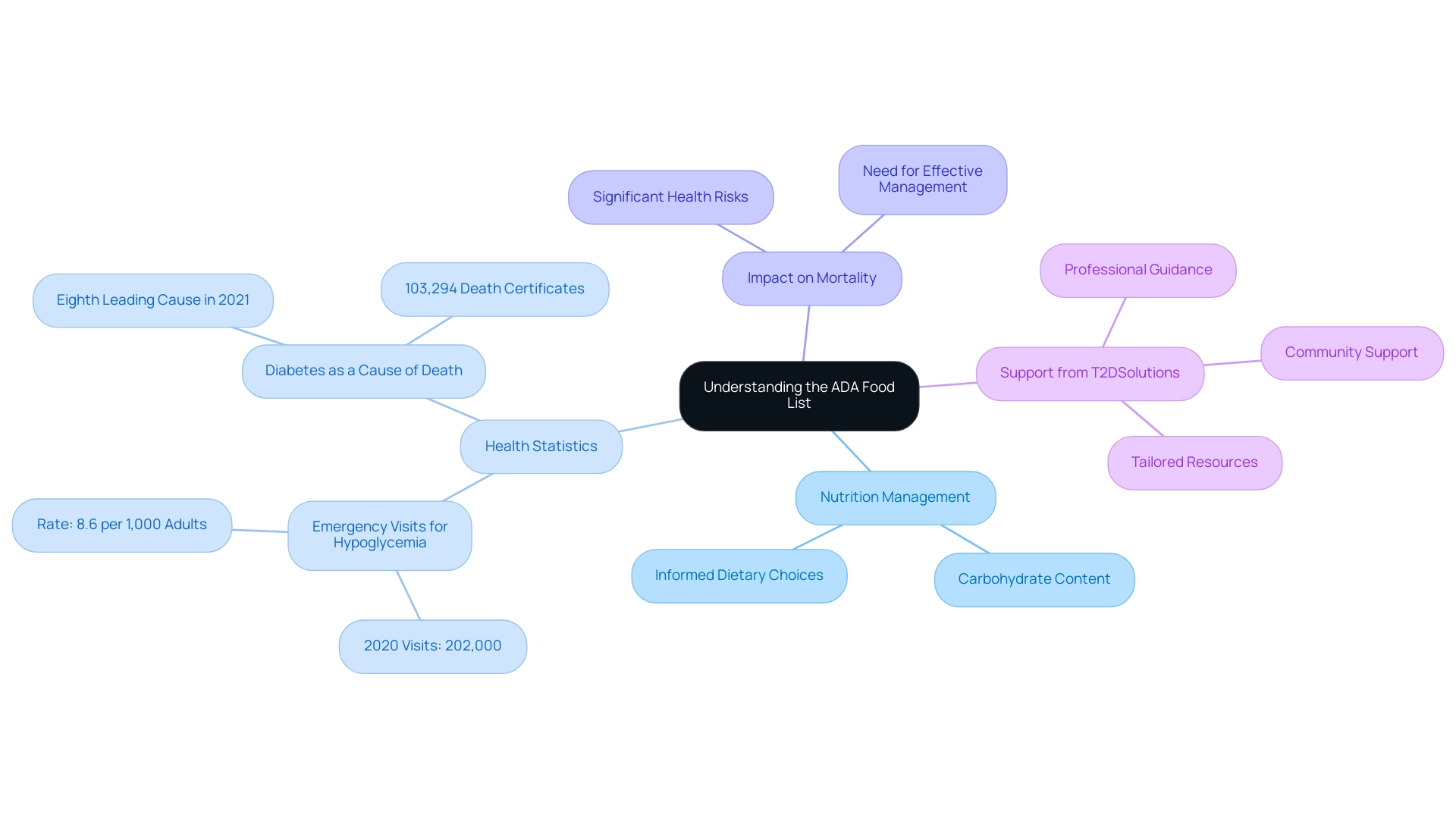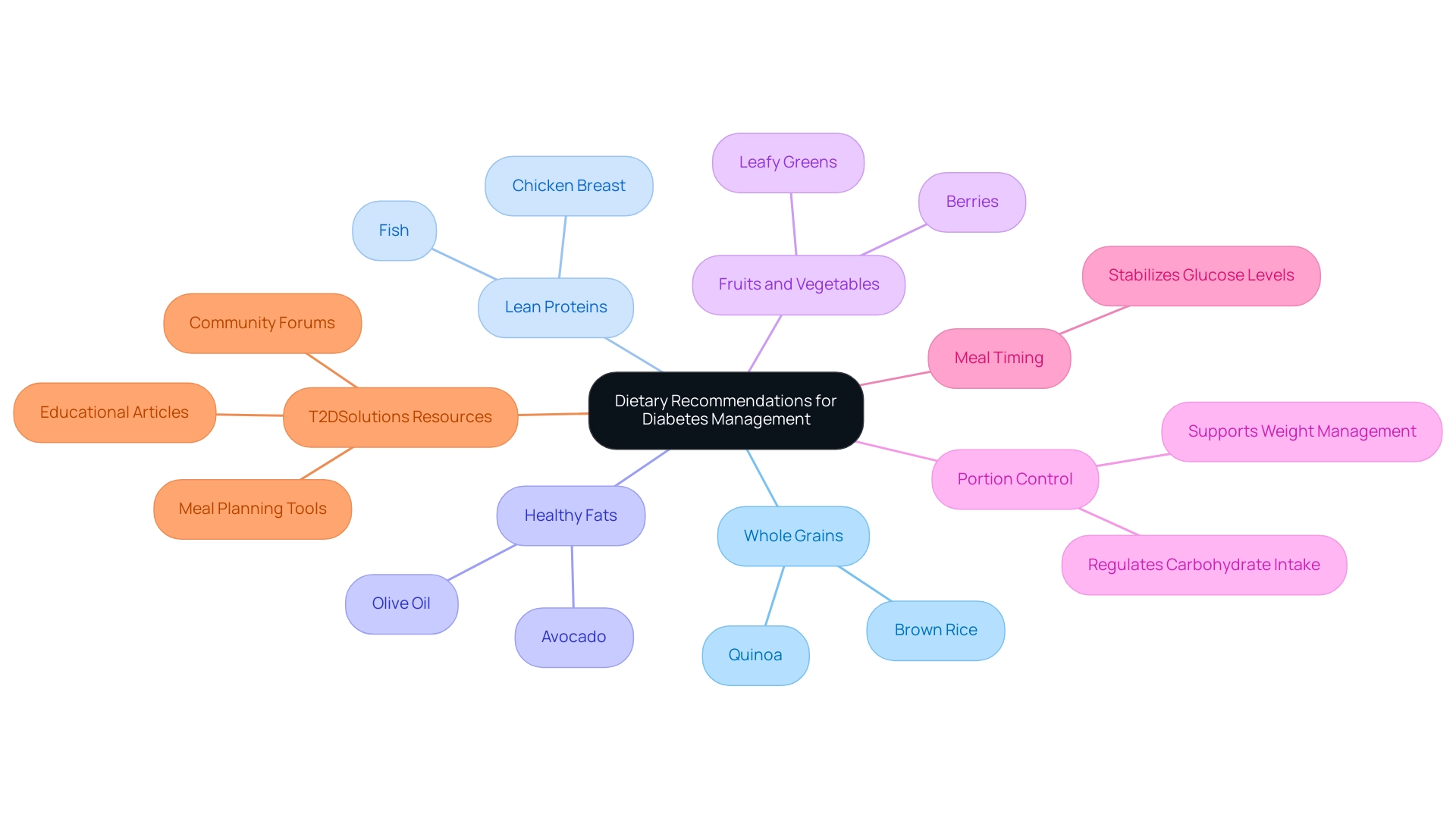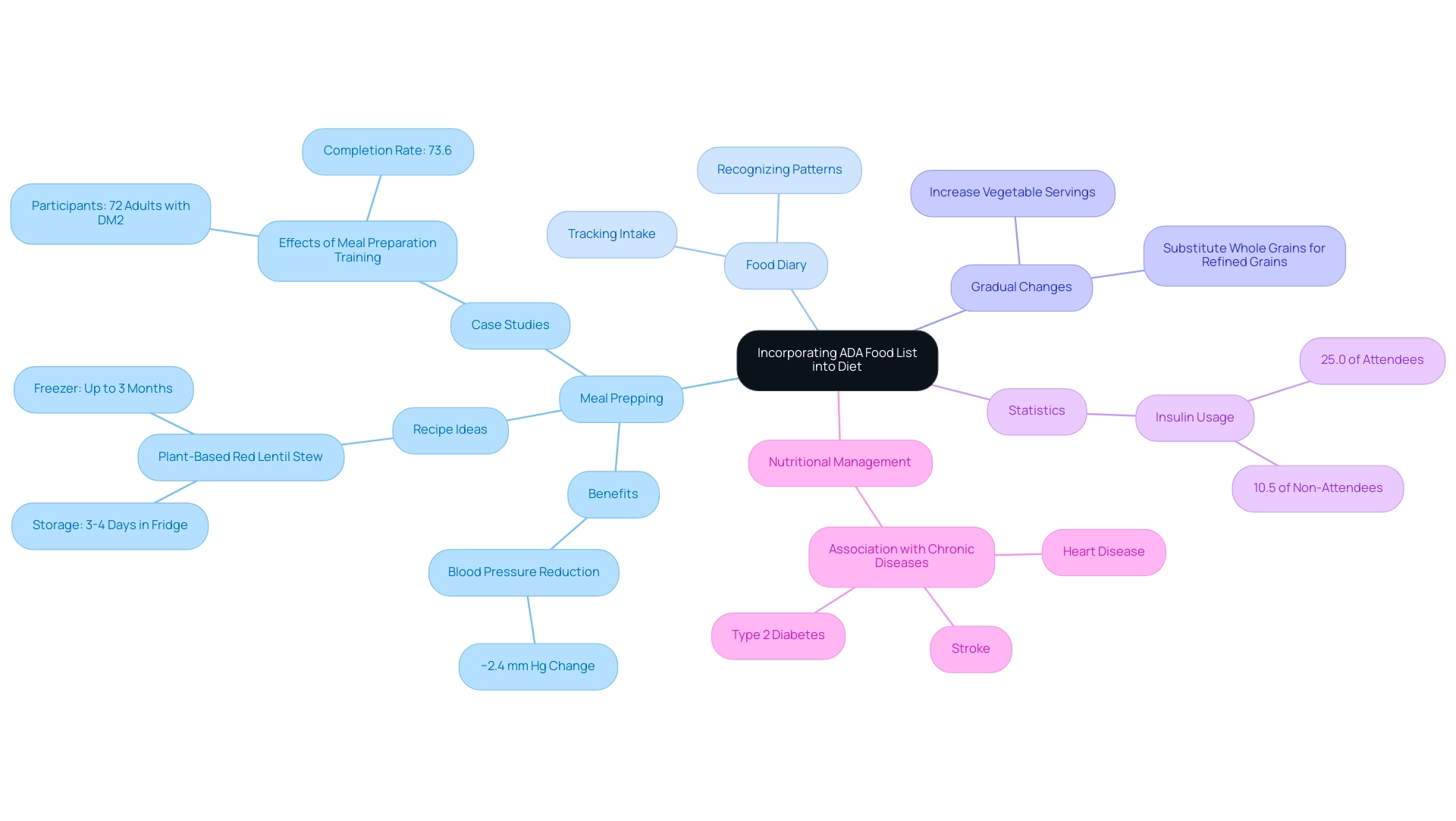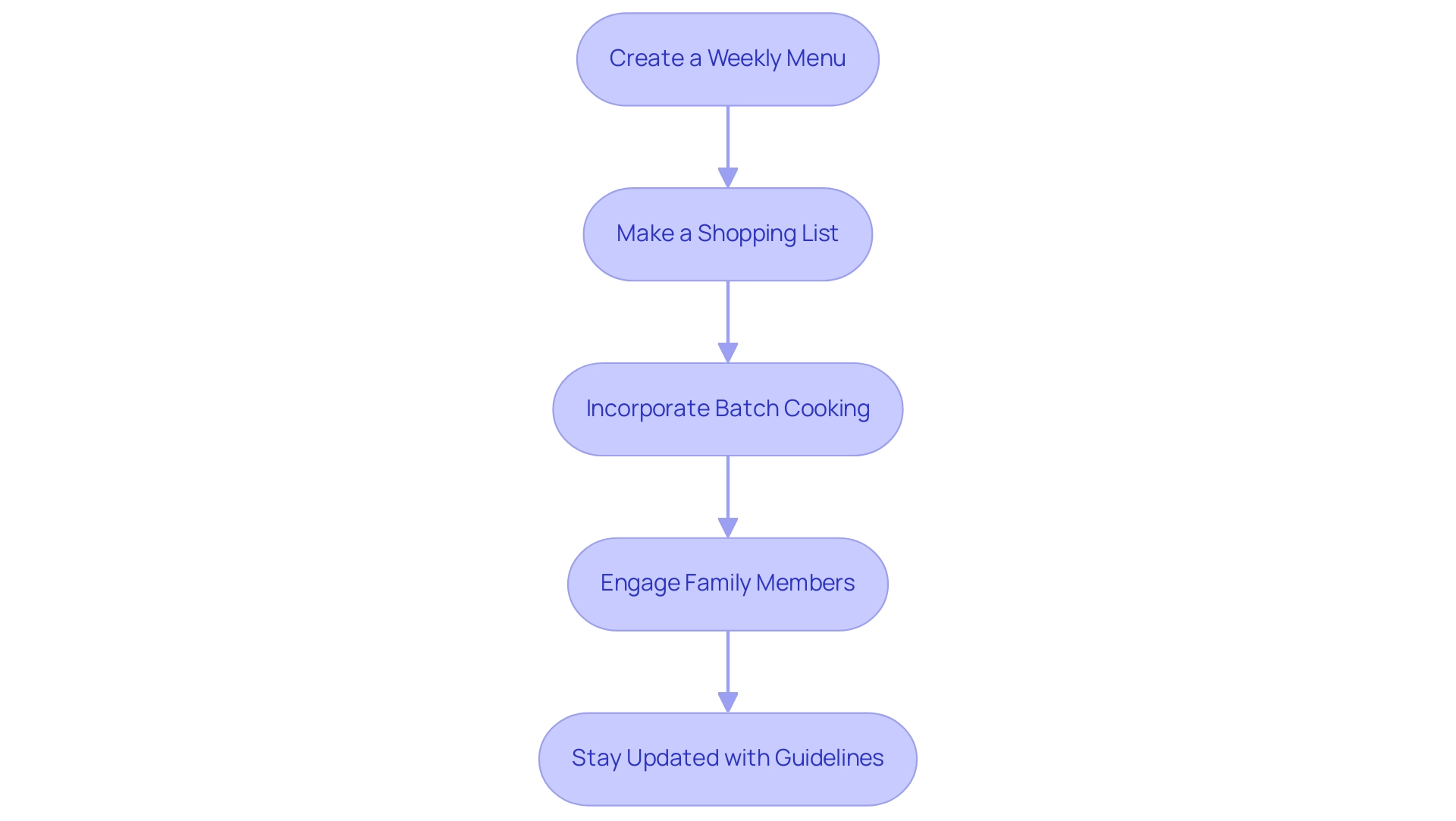Overview:
The article focuses on the importance of the ADA Food List as a crucial resource for individuals managing Type 2 and Type 3 diabetes, emphasizing its role in guiding healthier eating choices. It supports this by detailing how the ADA Food List categorizes foods based on carbohydrate content, enabling patients to make informed dietary decisions that can stabilize blood sugar levels and improve overall health outcomes.
Introduction
Navigating the complexities of diabetes management can be daunting, especially for those newly diagnosed. The American Diabetes Association (ADA) food list serves as a vital resource, categorizing foods based on their carbohydrate content to help individuals make informed dietary choices that directly affect their blood sugar levels.
With the alarming rise in diabetes-related health issues, including a significant number of emergency visits due to hypoglycemia, understanding the implications of food choices is more crucial than ever.
This article delves into the ADA food list, offering practical tips and strategies for incorporating it into daily life, ensuring that individuals can foster healthier eating habits and improve their overall well-being. By leveraging these insights, patients can take proactive steps towards effective diabetes management and a better quality of life.
Introduction to the ADA Food List: A Guide to Healthier Eating
Launching T2DSolutions as a comprehensive resource hub for Type 2 and Type 3 health education and community support, we recognize the importance of the ADA food list as a vital tool for individuals recently diagnosed with the condition. This structured approach to nutrition management categorizes foods by their carbohydrate content, enabling patients to make informed choices that directly influence their blood sugar levels. The urgency of effective management strategies is emphasized by Qiuping Gu from the National Center for Health Statistics, who highlights the prevalence of undiagnosed blood sugar conditions.
In 2020, there were 202,000 emergency department visits for hypoglycemia among adults with blood sugar issues, emphasizing the need for proactive dietary management. A case study titled 'Diabetes as a Cause of Death' reveals that the condition was the eighth leading cause of death in the United States in 2021, with 103,294 death certificates listing it as the underlying cause. This statistic emphasizes the significant effect of the condition on mortality rates and highlights the importance of the ADA food list in preventing such outcomes.
At T2DSolutions, we provide tailored resources, professional guidance, and community support that enable patients to effectively manage their condition. Utilizing the ADA food list allows patients to explore their dietary choices with greater confidence and encourages healthier eating practices that align with their health management objectives. Therefore, comprehending and utilizing the ADA food list is essential for effectively managing blood sugar levels, which leads to improved health outcomes and a better quality of life.

Understanding Dietary Recommendations for Diabetes Management
Dietary recommendations for effective diabetes management underscore the necessity of balanced meals encompassing diverse food groups. Recent research indicates that a well-rounded meal plan should prioritize:
- Whole grains
- Lean proteins
- Healthy fats
- An abundance of fruits and vegetables
Portion control is critical, as it helps regulate carbohydrate intake and support weight management, both of which are vital for maintaining optimal blood sugar levels.
Consistent meal timing further aids in stabilizing glucose levels, making it easier to follow nutritional guidelines. According to the British Journal of Nutrition, the prevalence of prediabetes is consistent across various racial and ethnic groups and education levels, highlighting the universal need for effective nutritional strategies. As T2DSolutions launches as a comprehensive resource center for Type 2 and Type 3 conditions management, it will provide features such as:
- Meal planning tools
- Educational articles
- Community forums
to assist newly diagnosed patients in applying these nutritional recommendations.
Chuck Henderson, the ADA’s chief executive officer, emphasizes,
At the ADA, we are focused on improving the quality of care for anyone who lives with this condition, prediabetes, or who is at risk of developing it.
This commitment emphasizes the significance of including the ADA food list in daily routines and recognizing how food selections from this list affect overall health. Case studies, such as the 'ABCs of Diabetes Management,' reveal that only 11.1% of adults meet all criteria for A1C, blood pressure, cholesterol, and smoking, while a larger percentage, 36.8%, meets less stringent goals.
This data demonstrates the ongoing challenges in achieving optimal management of the condition and reinforces the critical need for newly diagnosed patients to follow current nutritional guidelines, as their success in managing the illness is closely tied to their eating habits. T2DSolutions aims to bridge these gaps by offering the essential tools and support to empower patients in their dietary choices.

Choosing the Right Foods: What to Include and What to Avoid
With the launch of Td Solutions, we intend to offer an extensive support center for Type 2 and Type 3 blood sugar management education and community assistance. Our platform will showcase a range of resources, including educational articles, community forums, and expert consultations, all aimed at empowering individuals in managing their health effectively. Effectively managing this condition requires a strategic emphasis on including nutrient-rich items while reducing the consumption of those high in refined sugars and unhealthy fats.
Research illustrates that individuals within the lowest Dietary Energy Density (DED) quintile consumed significantly more fresh fruits and vegetables while limiting their intake of meat and processed foods. For instance, a longitudinal study involving over 21,000 participants documented that those who developed type 2 conditions exhibited a higher energy-dense diet, lower physical activity levels, and higher obesity rates compared to those who did not develop such conditions. This underscores the critical role of lifestyle factors in managing diabetes.
The ADA food list includes recommended foods for a diabetes-friendly diet, such as:
- Non-starchy vegetables
- Whole grains like brown rice and quinoa
- Lean proteins like chicken and fish
- Healthy fats from avocados and nuts
In contrast, it is advisable to avoid:
- Sugary beverages
- Processed snacks
- High-fat meats
As noted by Federico Ravaioli, author of 'Nutrition in Patients with Type 2 Diabetes: Present Knowledge and Remaining Challenges,' understanding these dietary distinctions empowers individuals to make informed choices that contribute to better health outcomes.
We invite you to subscribe to our updates to stay informed about new content and resources available through Td Solutions.

Practical Tips for Incorporating the ADA Food List into Your Diet
To effectively incorporate the ada food list into your daily diet, start by familiarizing yourself with the various categories and their recommended serving sizes. Meal prepping serves as an invaluable strategy in this process; planning your meals for the upcoming week can help ensure that each dish maintains a balanced composition of carbohydrates, proteins, and healthy fats. Research indicates that without antihypertensive medication alterations, even a modest weight change can be linked to a diastolic blood pressure reduction of −2.4 mm Hg, a notable advantage of nutritional management.
A case study titled 'Effects of Meal Preparation Training on Body Weight, Glycemia, and Blood Pressure' highlights the positive impact of meal prepping, showing that participants who engaged in meal preparation training experienced significant improvements in these health metrics. In addition to meal prepping, maintaining a food diary is an effective tool for tracking your intake and recognizing patterns that may affect your blood sugar levels. Implementing small, gradual changes—such as increasing vegetable servings or substituting refined grains for whole grains—can lead to substantial improvements over time, according to the ada food list.
Significantly, 25.0% of participants utilized insulin, whereas only 10.5% of those who did not, highlighting the necessity of customized nutritional management. As noted by Micha R., there is a clear association between nutritional factors and mortality from heart disease, stroke, and type 2 diabetes in the United States. With the launch of T 2 Solutions, a new support hub coming soon, we aim to provide you with comprehensive materials such as educational articles, meal planning tools, and community assistance to navigate these nutritional guidelines effectively.
To make meal prep easier, consider trying a plant-based red lentil stew recipe, which is easy to prepare and can be stored in the fridge for 3 to 4 days or frozen for up to 3 months. Adopting these strategies not only improves your dietary control but also aids in overall health management, backed by the community and educational support available at t2d solutions.

Meal Planning Strategies for Success with the ADA Food List
Welcome to T2DSolutions, your new center for Type 2 and Type 3 blood sugar management education and community support. Efficient meal preparation is essential for controlling blood sugar levels and includes crafting balanced dishes that follow the ADA food list and guidelines. At A2D Solutions, we aim to empower newly diagnosed patients by providing comprehensive resources that facilitate effective diabetes management.
Start by creating a weekly menu that includes a diverse range of items from each category within the ADA food list. This structured approach not only ensures nutritional balance but also aids in maintaining consistent carbohydrate intake, which is beneficial for blood sugar levels. According to the ADA food list, 'table sugar and other sugars in your diet don't increase blood glucose levels any higher than other simple carbohydrates.'
Create a shopping list based on your menu to guarantee that all necessary ingredients are readily available.
Incorporating batch cooking into your routine can significantly streamline meal preparation; by preparing larger portions of healthy meals, you can store and easily reheat them throughout the week. This strategy not only saves time but also supports consistent healthy eating. Furthermore, engaging family members in the meal planning process can enhance healthy eating habits for everyone involved, fostering a supportive environment that promotes collective responsibility towards nutrition.
Statistics show that family involvement can lead to improved dietary choices and outcomes for all family members. Additionally, every five years, a group of experts reviews the nutrition guidelines in the Standards of Care to ensure that the ADA food list recommendations are reliable and up-to-date. For further understanding of food choices and their impact on blood glucose, refer to case studies that provide insights on food labels and carbohydrate complexities.
Stay tuned for more resources and updates from T2 Solutions as we continue to support your journey in managing your health. Don't forget to subscribe to receive emails when new content is published!

Monitoring and Adjusting Your Diet
Monitoring your diet is an essential and ongoing practice integral to effective management of the condition, and T2D Solutions is here to support you on this journey. With the median county-level prevalence of diagnosed diabetes increasing from 6.3% in 2004 to 8.3% in 2021, understanding how various items impact blood sugar levels has never been more essential. At T2D Solutions, you'll discover extensive materials intended to assist you in systematically monitoring your blood sugar levels and keeping a thorough ADA food list, allowing you to recognize which meals positively influence your blood sugar and where adjustments might be required.
Regular consultations with healthcare providers or registered dietitians, supplemented by our resource hub, can offer valuable insights into optimizing your food choices. As noted by Mehnert H., 'the adaptation of sugar substitutes can play a significant role in a diabetic diet,' a point emphasized in a recent review published in the International Journal of Vitamin and Nutrition Research. Moreover, with an estimated 97.6 million adults in the U.S. having prediabetes, the high prevalence highlights the urgent need for preventive measures through nutritional adjustments.
Flexibility in your dietary choices, based on your body’s responses, is crucial for long-term success in managing blood sugar levels. T2D Solutions is dedicated to enhancing your understanding of food interactions with blood glucose and fostering an adaptive strategy in monitoring your health. Subscribe now to stay updated on new content and resources tailored to your needs, including expert articles, tips, and community support designed specifically for individuals managing Type 2 and Type 3 diabetes.

Conclusion
Incorporating the American Diabetes Association (ADA) food list into daily life is essential for effective diabetes management. This structured resource categorizes foods by carbohydrate content, empowering individuals to make informed dietary choices that can significantly impact their blood sugar levels. As highlighted throughout the article, understanding and applying these dietary guidelines is crucial, especially given the alarming statistics surrounding diabetes-related health issues, including emergency visits due to hypoglycemia.
Successful diabetes management relies on a balanced approach that includes nutrient-dense foods while minimizing refined sugars and unhealthy fats. By prioritizing whole grains, lean proteins, and an abundance of fruits and vegetables, individuals can create meal plans that stabilize blood sugar levels and promote overall health. Practical strategies, such as meal prepping and maintaining a food diary, further enhance the ability to monitor dietary intake and make necessary adjustments, fostering a proactive approach to health.
Ultimately, the ADA food list serves not just as a dietary guide but as a foundational element in the journey toward better health outcomes for those living with diabetes. With resources like T2DSolutions available to provide support and education, individuals can feel more confident in their dietary choices. Embracing these strategies not only aids in effective diabetes management but also contributes to an improved quality of life, reinforcing the importance of informed eating habits in navigating the complexities of diabetes.



